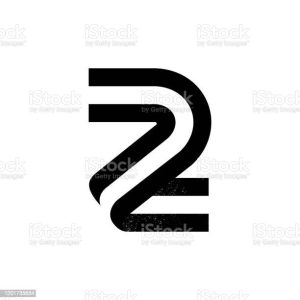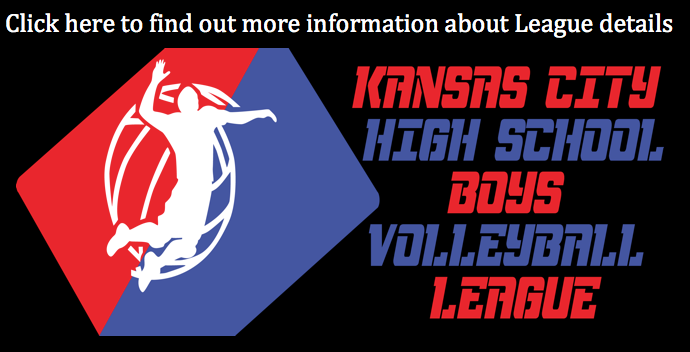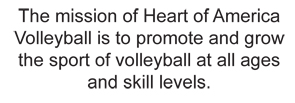2023 Rule of The Week
FOR MOST RECENT UPDATES (REVISED 03/25/23 19:05)
Refresh Page or Clear Browser History
04/05 - Front Number Placement
Ignoring the red garment underneath, the number placement on the front of this jersey would be considered legal on this player in USAV play.
A) Correct
B) Incorrect

Answer
03/29 - Using Graphical Representations of Numbers
Below is a black "2" used on a white jersey. This is a legal number.
A) Correct
B) Incorrect

Answer
03/15 - Jewelry Falls Out During Rally
During play, a player's taped earring falls out near the center line and poses a safety hazard.
A) No fault (players are allowed to wear jewelry)
B) Replay, delay sanction (jewelry is considered the same as any other personal equipment)
C) Replay (jewelry is considered part of the player's equipment)
D) Replay, yellow card (taping jewelry is unsportsmanlike)
Answer
03/08 - Tape Over Jewelry
At the end of a rally, the first referee notices that a player on Team S is wearing hoop earrings with tape over them.
A) No fault (players are allowed to wear jewelry)
B) Delay sanction (players may not wear hoop jewelry)
C) Delay sanction (players may not tape over potentially hazardous jewelry)
D) No fault (as long as the hoop earrings can be removed without delaying the match)
Answer
03/01 - Headsets
In which of the following situations is it appropriate to use headsets while officiating? (Select all that apply)
A) With a junior player
B) With another certified official
C) With a work team coach (adult)
D) With someone being trained to be a certified official
E) None of these; headsets are not allowed in USAV
Answer
B) With another certified official, and
D) With someone being trained to be a certified official
02/22 - Libero Attempting To Block
The Libero, who is near the net, jumps and reaches higher than the net to attempt to block an attack-hit by S4 but does not touch the ball.
A) No fault; play continues (the Libero did not touch the ball)
B) Point Team S (the Libero may not attempt to block, even if she doesn't touch the ball)
C) At the end of the rally and after awarding the point, yellow card (the Libero exhibited unsporting behavior by attempting to block)
D) Point Team S (the Libero may not attempt to use their hands overhead in the front zone)
Answer
02/15 - Possible Collective Block With Libero
The Libero, who is standing next to R3, jumps to block and has hands extended above head height but not higher than the top of the net. S2 attacks the ball into the block of R3, who is reaching higher than the top of the net.
A) No fault; play continues (the Libero is not considered a blocker)
B) Point Team S (Liberos may not attempt to block, even if they don't touch the ball)
C) Point Team S (Even though the Libero didn't touch the ball, she is part of a collective block with R3)
D) Point Team S (Liberos may not attempt to block, even if they don't reach higher than the top of the net)
Answer
02/08 - Possible Collective Block With 3 Hits
S2 and S4 are close together and jump to block an attack from R2. S2 is reaching higher than the top of the net but S4 is not. R2’s attack is contacted only by S4. S4 then turns and passes the ball to S1, who sets the ball to S3. S3 attacks the ball to the floor of Team R’s court.
A) Point Team S (ball down)
B) Point Team R (double-contact)
C) Point Team R (illegal block)
D) Double fault; replay
Answer
02/01 - Back Row Attack With A Simultaneous Block
While in the front zone, R5 jumps and attacks the ball, which is entirely higher than the top of the net and completely above Team R’s court. Simultaneous with the contact of the ball by R5, S2 reaches beyond the plane of the net and blocks the ball.
A) Double fault
B) Illegal (back row) attack
C) Illegal block
D) Reaching beyond the plane of the net
E) No fault; play continues
Answer
01/25 - Libero Entering For An Injured Player
At the end of a rally, the Team A Libero, who is currently on the court, is legally replaced and is now sitting on the bench, along with two other players who have already entered at different positions. During the next rally, a back-row player suffers an injury, causing the R1 to stop play and issue a replay. The Team A coach requests that the Libero go in for the injured player, which the referees allow.
A) Correct decision; the Libero may enter the court for an injured back-row player
B) Incorrect decision; the Libero has not sat out for one completed rally (because the rally is being replayed)
C) Incorrect decision; the Libero is not considered a regular player and cannot replace an injured player
D) Incorrect decision; since there are regular players on the bench, they must be used to replace the injured player before using the Libero
Answer
01/18 - Expelled Libero
Team A has designated one Libero for the first set of the match. That Libero is expelled from the first set. Which option is available to the team when the Libero is expelled?
A) The team must play with no Libero for the remainder of the current set.
B) The team must play with no Libero for the remainder of the match.
C) The team may redesignate a new Libero, and the expelled Libero may play in subsequent sets.
D) If the team chooses not to redesignate a new Libero, the expelled Libero may play in subsequent sets.
Answer
01/11 - Team A Does Not Designate a Libero On The Lineup Sheet
While checking the players on the court before the start of the set, the 2nd referee discovers that Team A did not designate a Libero. What is the correct action by the 2nd referee and scorer?
A) The 2nd referee informs the coach the team must play without a Libero for the match.
B) The 2nd referee informs the coach the team must play without a Libero for the set.
C) Team A may immediately designate a Libero, and the scorer records this number on the score sheet.
D) Team A may immediately designate a Libero, and the scorer records this number on the score sheet and assesses a delay sanction.
Answer
01/04 - Team S Substitute Is Wrong Server
Team S #7 serves two points and then loses the rally. After Team R serves for a point, it is discovered that #7 entered the wrong position in the service order for Team S. After correcting the improper substitution, what actions should be taken to correct this situation?
A) Award Team R an additional point. Team R continues to serve.
B) Remove the two points scored by #7. Team R continues to serve.
C) No points are removed or awarded, and Team R continues to serve.
D) No points are removed or awarded. Assess a delay sanction to Team S, and Team R continues to serve.
E) Award Team R an additional point and remove the two points scored by #7. Team R continues to serve.





